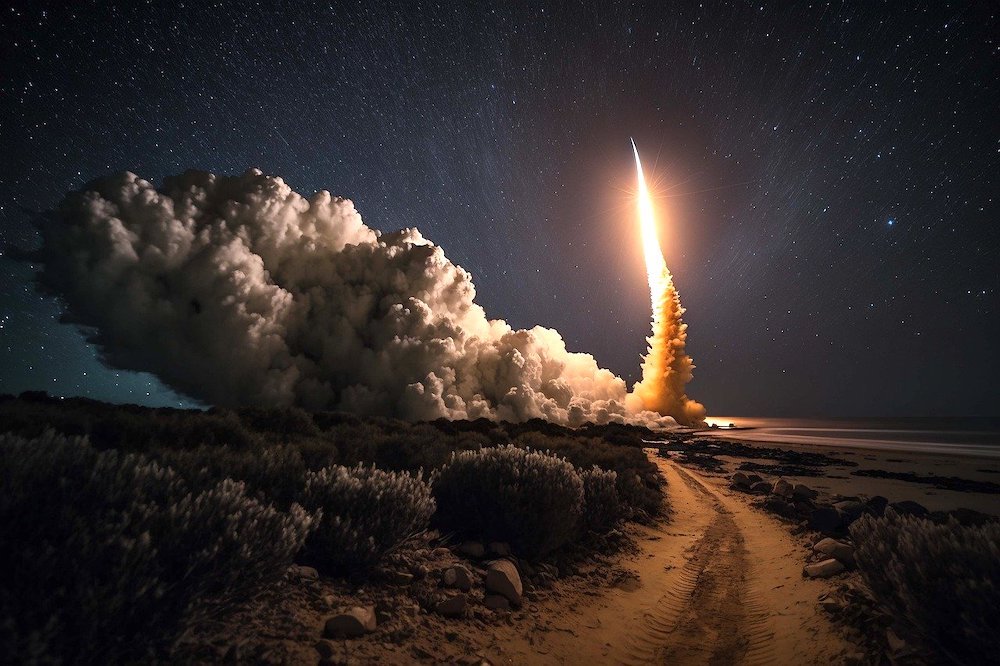China is making significant advancements in its space technology by developing a new reusable air-launched orbital rocket system. The China Academy of Launch Vehicle Technology (CALT), a rocket developer under China’s state-owned main space contractor, China Aerospace Science and Technology Corporation (CASC), is spearheading this project.
The design envisages a three-stage rocket weighing approximately 20,000 kilograms, capable of carrying a payload of up to 300 kilograms to a 500-km-altitude sun-synchronous orbit (SSO). This system offers a flexible and affordable approach to launching small satellites without requiring access to traditional spaceports, which are currently a bottleneck for Chinese space missions.
This development builds upon earlier initiatives, as reported in 2017 when CALT designed models capable of sending about 100 to 200-kilogram payloads into low Earth orbit. The Y-20 strategic transport plane was identified as the carrier for these rockets, offering rapid deployment capabilities that are particularly useful in disaster relief or for replacing dysfunctional satellites. Air-launched rockets, namely solid-fueled ones, offer advantages such as faster launch preparations compared to land-based, liquid-fueled rockets and reduced susceptibility to bad weather.
Moreover, they do not require extensive ground infrastructure, leading to lower launch costs.
The technological hurdles for China in developing this system are significant. As reported by SpaceNews earlier this week, China is heavily invested in a reusable air-launched system that can reliably and safely deliver payloads to orbit. This would all require advancements in areas like propulsion, materials science, and aerodynamics. Additionally, the system’s design must ensure efficient integration with the carrier aircraft, precision release mechanisms, and controlled ignition post-release.
According to SpaceNews, this new “flexible, affordable and dedicated launch” system for small satellites was mentioned in an abstract submitted to Lyu Yan of CALT at the 74th International Astronautical Congress in Baku, Azerbaijan, in October.
Amidst this development, China is currently fighting a poor reputation in the space industry.
China contributes most notably to space congestion, with its satellites making up nearly 7% of total satellites in orbit but accounting for almost 25% of total space debris. This mainly stems from its 2007 anti-satellite (ASAT) test. The resultant space debris increases the risk of collisions, raising operational costs and necessitating more robust spacecraft designs. The weaponization of space aside, while China has made significant strides in developing its own space technology, it still relies on certain foreign technologies and components. This dependency can be an economic vulnerability, especially in the context of international trade tensions or embargoes.
Globally, there are precedents for air-launched space technology. The United States has been a pioneer in air-launched space missions, with the first mission undertaken in 1990 using a Pegasus rocket developed by Orbital Sciences Corp, launched from a B-52 bomber. Since then, 43 Pegasus missions have been carried out. Companies like Virgin Galactic and Generation Orbit Launch Services in the U.S. have also been developing air-launched rockets. Virgin Orbit developed a notable air-launch system using its Cosmic Girl to deploy the LauncherOne rocket, though it filed for bankruptcy earlier in 2023.
China’s motivation for developing this technology aligns with its broader goals in space. Such a system would provide the country with a flexible and economical option for launching small satellites, crucial for expanding its capabilities in areas like Earth observation, telecommunications, and disaster response. It also reflects China’s ambition to match or exceed global standards in space technology, as seen in its pursuit of various launch technologies, including solid rockets, new-generation human-rated launchers, and potentially reusable commercial kerosene and methane-fueled launchers.
The endeavor is part of China’s broader effort to increase its options and overall access to space.
It is still being determined where China currently stands in developing this technology. However, it is taking lessons from others. There may be substantial technological challenges, but China is following in the footsteps of pioneering work done by other countries, particularly the United States, in air-launched space missions. This development is part of China’s strategic effort to enhance its space capabilities and assert its presence in the global space industry.
MJ Banias is a journalist and podcaster who covers security and technology. He is the host of The Debrief Weekly Report and Cloak & Dagger | An OSINT Podcast. You can email MJ at mj@thedebrief.org or follow him on Twitter @mjbanias.

